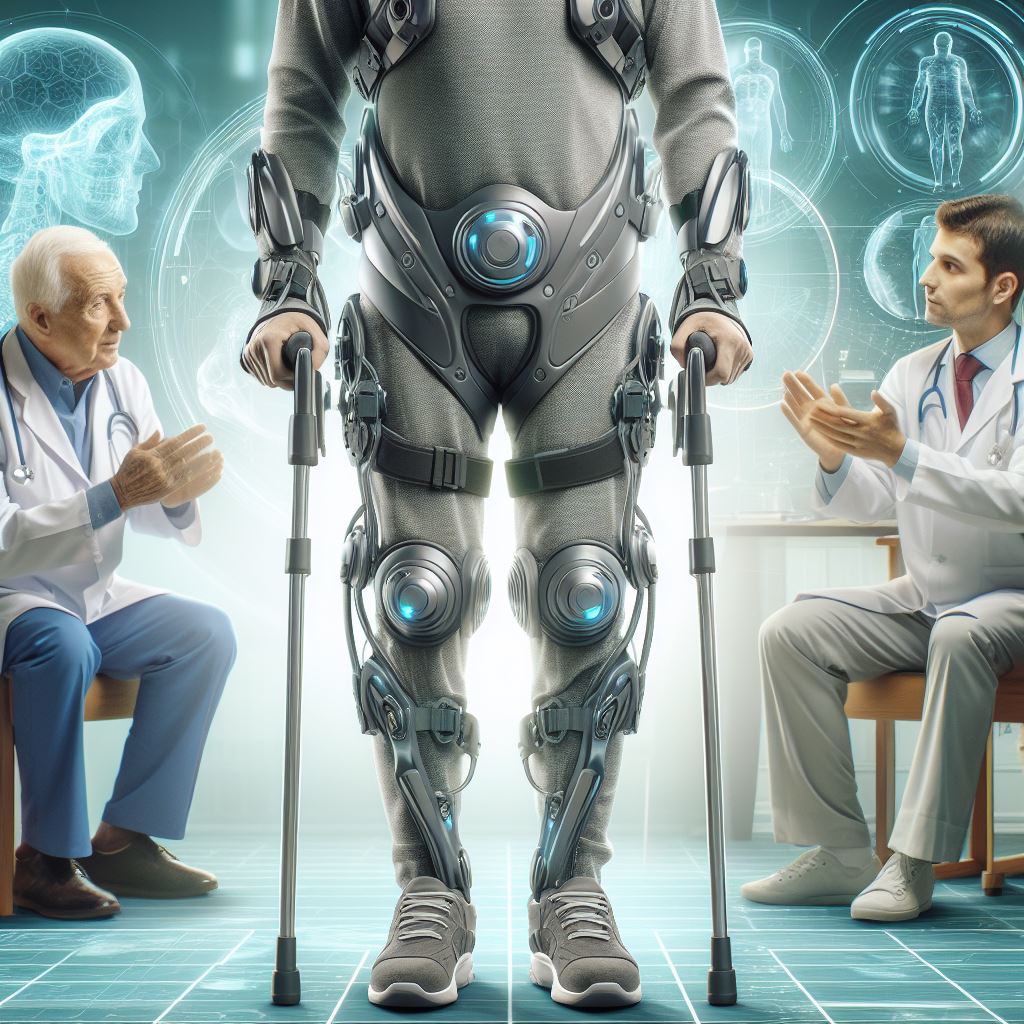Exoskeleton technology, once a concept relegated to science fiction, has rapidly evolved into a transformative force in various industries. Designed to enhance human capabilities and support physical tasks, exoskeletons are finding applications in fields ranging from healthcare to manufacturing. As advancements in robotics, materials science, and artificial intelligence (AI) continue to drive innovation, the exoskeleton market is poised for significant growth. This article explores the current trends, key innovations, and future prospects of the exoskeleton market.
The global exoskeleton industry size is estimated to be USD 0.7 billion in 2023 and is projected to reach USD 3.7 billion by 2028, at a CAGR of 38.6%. The growing adoption of robotic rehabilitation in healthcare and rising investment in the advancement of the exoskeleton are responsible for the growth of the exoskeleton Industry . Additionally, the rising insurance coverage for exoskeleton technology is also responsible for the markets growth.
1. Current Trends in the Exoskeleton Market
- Growth in Healthcare Applications: Exoskeletons are increasingly being used in healthcare to aid in rehabilitation and assist patients with mobility impairments. Robotic exoskeletons help individuals with spinal cord injuries or neurological disorders regain mobility and improve their quality of life. The demand for wearable rehabilitation devices is growing as the aging population and prevalence of chronic conditions increase.
- Expansion into Industrial and Manufacturing Sectors: In industrial and manufacturing settings, exoskeletons are used to reduce physical strain and enhance worker productivity. Industrial exoskeletons support workers in tasks requiring heavy lifting, repetitive motions, or prolonged standing. This helps in reducing the risk of musculoskeletal injuries and improving overall workplace safety.
- Military and Defense Applications: The military sector is investing in exoskeleton technology to enhance soldier performance and endurance. Military exoskeletons are designed to augment physical strength, reduce fatigue, and improve load-carrying capabilities. These advancements are aimed at increasing operational efficiency and effectiveness in challenging environments.
2. Innovations Driving the Exoskeleton Market
- Advancements in Materials and Design: Recent innovations in materials science have led to the development of lightweight, durable, and flexible exoskeletons. Advanced materials, such as carbon fiber composites and high-strength alloys, contribute to the overall performance and comfort of exoskeletons. Improvements in design focus on enhancing ergonomics, adjustability, and user-friendliness.
- Integration of Artificial Intelligence (AI) and Machine Learning: AI and machine learning technologies are enhancing the functionality of exoskeletons by enabling adaptive and responsive control systems. AI algorithms analyze user movements and adjust the exoskeleton’s support in real-time, optimizing performance and improving user experience. This integration also facilitates predictive maintenance and troubleshooting.
- Wearable and Portable Solutions: The development of compact, wearable, and portable exoskeletons is expanding the range of applications. Advances in battery technology and miniaturization allow for exoskeletons that are easier to wear and use in various environments. This trend is making exoskeletons more accessible and practical for everyday use.
Download PDF Brochure @ https://www.marketsandmarkets.com/pdfdownloadNew.asp?id=40697797

3. Market Dynamics and Opportunities
- Rising Demand for Rehabilitation and Assistive Technologies: The increasing prevalence of mobility impairments and neurological disorders is driving demand for exoskeletons in rehabilitation and assistive care. Government initiatives, healthcare investments, and growing awareness of the benefits of robotic rehabilitation are contributing to market growth.
- Technological Advancements and Investment: Ongoing research and development, coupled with substantial investments from both private and public sectors, are fostering innovation in exoskeleton technology. Collaborations between technology companies, research institutions, and healthcare providers are accelerating the development of advanced exoskeleton solutions.
- Growing Awareness and Adoption in Industry: The adoption of exoskeletons in industrial and manufacturing sectors is driven by increasing awareness of their benefits in reducing workplace injuries and enhancing productivity. Companies are recognizing the value of investing in exoskeleton technology to improve worker safety and efficiency.
4. Challenges and Considerations
- Cost and Affordability: The high cost of exoskeleton technology remains a significant barrier to widespread adoption. While prices are expected to decrease with technological advancements and economies of scale, affordability remains a key consideration for both individual users and organizations.
- Regulatory and Safety Standards: Ensuring compliance with regulatory and safety standards is crucial for the development and deployment of exoskeletons. Manufacturers must navigate complex regulations and obtain necessary certifications to ensure the safety and effectiveness of their products.
- User Adaptation and Training: Effective use of exoskeletons requires proper training and adaptation. Users must learn to interact with the technology and incorporate it into their daily routines. Providing adequate training and support is essential for maximizing the benefits of exoskeletons.
5. Future Outlook
The future of the exoskeleton market is characterized by continued innovation, growing applications, and evolving user needs. Key trends and developments expected to shape the market include:
- Increased Integration with Wearable Technology: Future exoskeletons are likely to integrate with other wearable technologies, such as health monitoring devices and augmented reality systems. This integration will enhance the functionality and versatility of exoskeletons, providing users with comprehensive support and data.
- Advancements in AI and Robotics: Continued advancements in AI and robotics will drive the development of more sophisticated and responsive exoskeletons. Improved algorithms, enhanced sensors, and advanced control systems will contribute to greater adaptability and user comfort.
- Expansion into New Markets: The exoskeleton market is expected to expand into new sectors, including logistics, emergency services, and sports. Innovations in design and functionality will make exoskeletons more applicable to a wide range of activities and environments.
The exoskeleton market is on the brink of significant transformation, driven by technological innovations, expanding applications, and evolving user needs. From healthcare and industrial applications to military and defense, exoskeletons are enhancing human capabilities and improving quality of life. As advancements in materials science, AI, and robotics continue to shape the industry, the future of exoskeleton technology promises exciting opportunities and new possibilities for enhancing human performance and well-being.
